| Zeitschrift Umělec 2002/3 >> Priestor vzůru nohoma (Upside Down, Galéria Priestor for Contemporary Arts, Bratislava) | Übersicht aller Ausgaben | ||||||||||||
|
|||||||||||||
Priestor vzůru nohoma (Upside Down, Galéria Priestor for Contemporary Arts, Bratislava)Zeitschrift Umělec 2002/301.03.2002 Lucia Gavuĺová | rezension | en cs |
|||||||||||||
|
Upside Down: Gabika Binderová, Marko Blažo,
Veronika Bromová, Eva Holubíková, Aneta Mona Chiša, Marek Kvetán, Zbigniew Libera, Hajnal Németh, Vladimir Nikolić, Maria Pask, Rasto Sedlacik, Krassimir Terziev, Vera Večanski and Dušan Zahoranský, Curator: Juraj Čarný, Galéria Priestor for Contemporary Arts, Bratislava, 7 June–30 June, 2002 The name of Galéria Priestor’s Upside Down exhibition alludes to the precarious condition the gallery finds itself in, as well as the overall art environment in Slovakia. With no grant to continue its activity for another year, the gallery finds itself in a fight for its survival. “It is hard to realize one’s ambitions and ideas of professional operation within Slovak culture in an environment that is nonstandard and drives one to unprofessionalism,” curator Juraj Čarný said. “The question is whether it makes sense to continue making exhibitions under the given conditions or to leave the space unused.” Čarný did not establish a theme and ask artists to illustrate it. Rather, the concept of the exhibition came to life as he selected the individual works. Upside Down presented female artists in separate rooms, emphasizing the differences in how the sexes perceived their surroundings. The men addressed issues in descriptive, factual manner, with pragmatic reflection. The women employed more intimate statements, communicating with the context of female art, but without identifying with it. However, the intention was not to open a discussion on what is “women’s art” and what is “men’s art.” Rather, the works were separated to initiate a dialogue between them. Vera Večanski and Vladimir Nikolić, artists from the former Yugoslavia, presented their video short exploring the position of a contemporary artist. How to Become a Great Artist (9.5 minutes) examined, among other things, whether artists are born or made: A young woman with minimal talent longs to become a great artist and a part of the bohemian community of independent intellectuals. She speaks to a self-confident, established artist who helps her to fulfill her dream through physical exercise, verbal training, meditation and other nonsensical activities. The film asked whether artists should exhibit when they have nothing to show and how “made” artists should maintain their established positions. Dušan Zahoranský and Krassimir Terziev’s installations shared a concern over the detrimental influence of mass media, its ubiquity and ability to form opinions and values. Terziev is a representative of the younger generation of Bulgarian artists whose works are no longer burdened with legacy of socialist regime. Terziev works with multimedia and Internet art using the pop esthetics of Hollywood movies and fashion magazines. In his series of C-prints On the BG Track (2001), he presented images and dialogues from western films that, in one way or another, refer to his country, exploring the (biased and comic) image western consumers have of Bulgaria. In his installation You Can Shave the Baby (1996), represented here in photographs, Polish artist Zbigniew Libera presented five extremely scrubby dolls in colorful cardboard boxes with cellophane cover. Instructions on right packaging advise users to remove the doll’s hair with scissors, not a razor, contradicting the name of the “product” (You Can Shave the Baby). Libera’s work also commented on the tendencies of art galleries during the 1980s to inform visitors in detail of exhibited works. He confronted technologically perfect sound guides and detailed texts that were intended to lead visitors to “understand and appreciate” the art. Marko Blažo’s installation was making its second appearance at Priestor, having previously been part of the exhibition Naplnená Brušká (Full Bellies) in 1999. Comprising a row of books on the wall near the gallery entrance, the subtle treatment of space became an integral part of the gallery. Dutch artist Maria Pask was the main figure in her tense and introspective video projection, in which the artist shoves cake in her mouth and spits it out again. Veronika Bromová photographed herself as a human table, naked on all fours and topped with a glass tabletop. An erotic poem accompanied the photograph. Hajnal Németh work bordered on absurd humor, reflecting on the female/male space division in two video projects, Striptease or Not and Babak. In Aneta Mona Chisa’s video What the Fuck Are You Staring At?, a young woman spits insults at the viewer, provoking insecurity and shame and raising a very good question. Grabrika Binderová’s photo installation 100% Woman, which showed previously at the Rimavská Sobota City Gallery in Slovakia, took a critical look the female world and tendencies in women’s art. The artist labeled various parts of a female body with such hand-woven textile labels as “100% Woman” and “Made in Womania.” Upside Down represented both sample of Priestor’s existing scope and direction while hinting at its future activities. In the upcoming season, the gallery hopes to initiate regular cooperation with partner organizations abroad, but the question of its future operation is still open.
01.03.2002
Empfohlene Artikel
|
|||||||||||||
|
04.02.2020 10:17
Letošní 50. ročník Art Basel přilákal celkem 93 000 návštěvníků a sběratelů z 80 zemí světa. 290 prémiových galerií představilo umělecká díla od počátku 20. století až po současnost. Hlavní sektor přehlídky, tradičně v prvním patře výstavního prostoru, představil 232 předních galerií z celého světa nabízející umění nejvyšší kvality. Veletrh ukázal vzestupný trend prodeje prostřednictvím galerií jak soukromým sbírkám, tak i institucím. Kromě hlavního veletrhu stály za návštěvu i ty přidružené: Volta, Liste a Photo Basel, k tomu doprovodné programy a výstavy v místních institucích, které kvalitou daleko přesahují hranice města tj. Kunsthalle Basel, Kunstmuseum, Tinguely muzeum nebo Fondation Beyeler.
|




















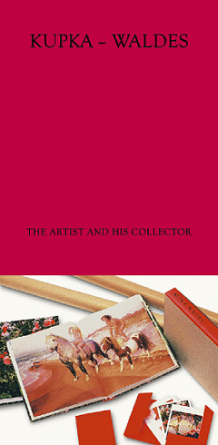






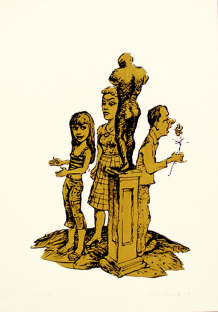




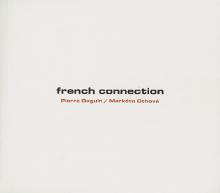

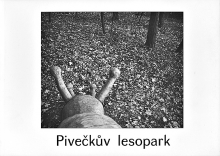
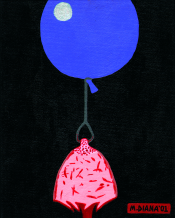


 We Are Rising National Gallery For You! Go to Kyjov by Krásná Lípa no.37.
We Are Rising National Gallery For You! Go to Kyjov by Krásná Lípa no.37.
Kommentar
Der Artikel ist bisher nicht kommentiert wordenNeuen Kommentar einfügen